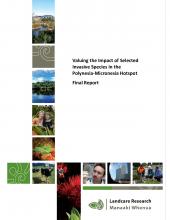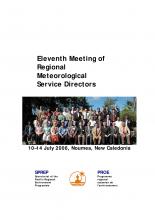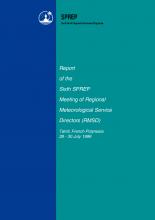Report of the Fourteenth (14th) and final meeting of the Regional Meteorological Services Directors (RMSD) and the First (1st) Pacific Meteorological Council (PMC-1), 812 August 2011, Majuro, Marshall Islands
Secretariat of the Pacific Regional Environment Programme (SPREP)
2012
The Regional Meteorological Services Directors (RMSD) Meeting convened for its 14th session at the International Conference Centre in Majuro, Republic of the Marshall Islands from 912th August 2011. It was preceded by a Pacific Regional Meteorological Services Directors Workshop in Support of Climate Adaptation Planning in the Pacific Islands on 8th August. The objectives of the meeting were for participants to formulate and establish a clear understanding of the Pacific Meteorological Council (PMC), the Pacific Desk Partnership concept (since renamed as the Pacific Meteorological Desk Partnership, PMDP), and the Pacific Meteorological Strategic Plan (PMSP) (2012 2015). A total of 54 participants attended the meeting. Primarily the participants were Meteorological Service Directors and representatives from American Samoa, Australia, Cook Islands, Federated States of Micronesia, Fiji, French Polynesia, Guam, Kiribati, New Caledonia, New Zealand, Palau, Papua New Guinea, Marshall Islands, Samoa, Solomon Islands, Tonga, Tuvalu, United States of America and Vanuatu. Representatives of the Finnish Meteorological Institute, SPREP, SPC, WMO, UNESCO-IOC, Institute for Global Environmental Strategies, University of Oklahoma, Pacific ENSO Applications Climate (PEAC) Centre (co-located at the University of Hawaii and the University of Guam) were also present








